How do you fight 50 billion pieces of litter? Start by picking up trash on your next hike
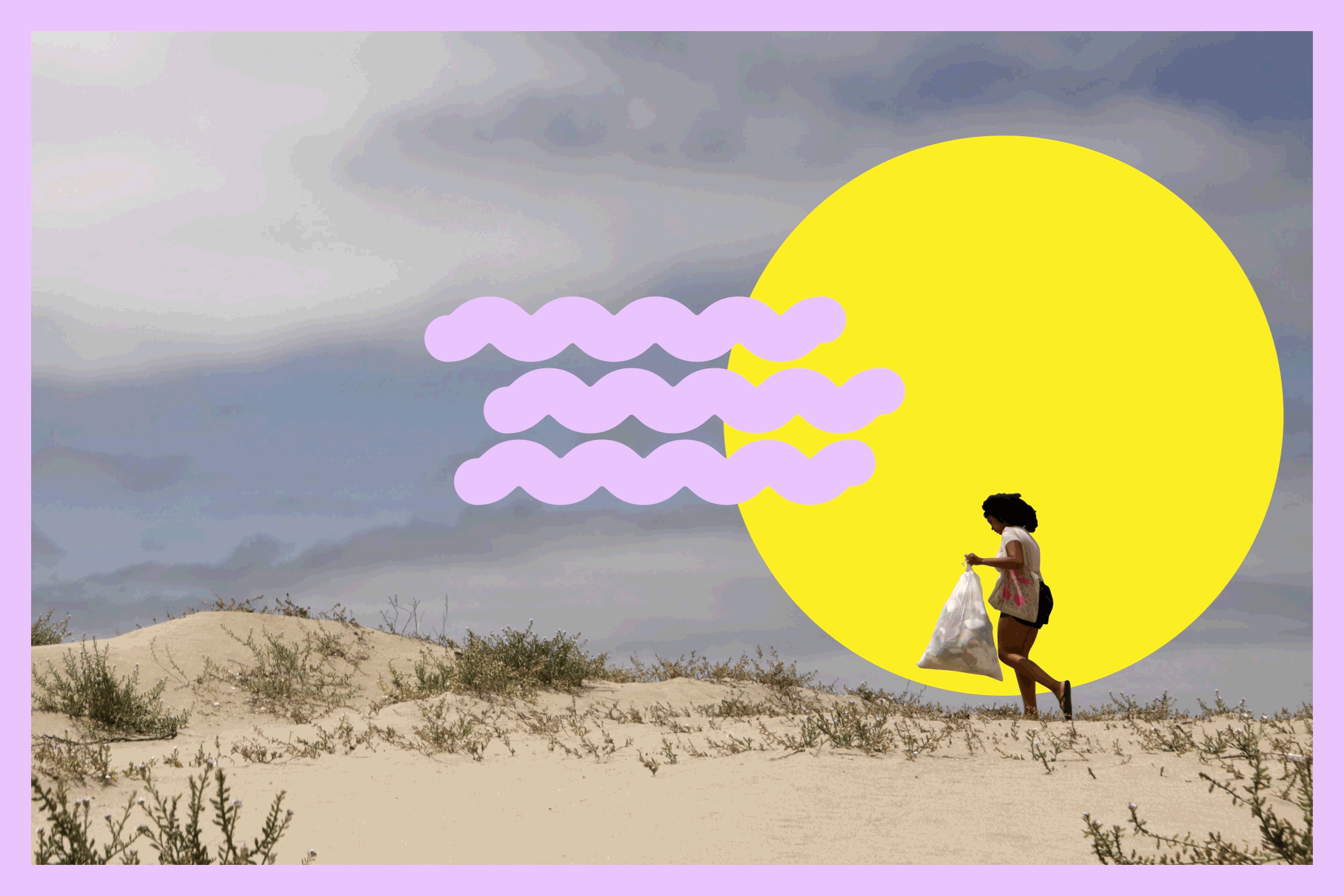
Dozens of balloon fragments, plastic arrow caps, water bottles and granola bar wrappers litter the Lower Arroyo archery trails I’m hiking with twin sisters Kelly and Christy Villasor on a warm April evening — and we’re trying to pick it all up.
That proves to be a daunting task. We snap up everything we can, but it’s likely we missed hundreds of microplastics and wrappers. But hey, we got a beautiful hike in, and we cleaned up while we did it.
That’s the very aim of Pick Up While You Hike Up, a hiking group run by the Carson-based, 29-year-old Villasor sisters since 2016. That was when Kelly noticed large amounts of trash on a hike up to a water tower in Whittier: plastic bottles, bottle caps, bags of dog waste and even a torn-open pack of napkins.
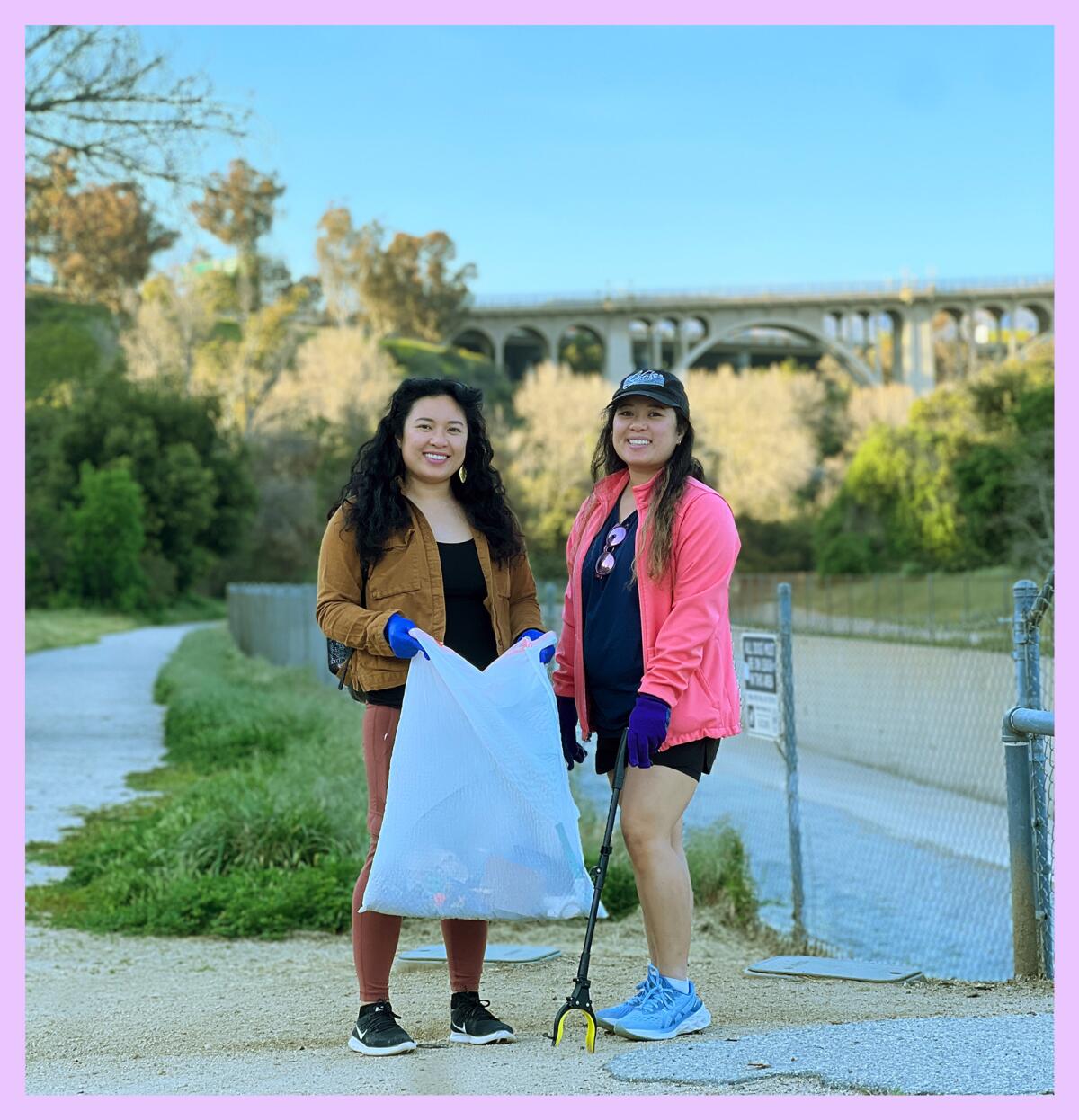
“I remember thinking, ‘Why is it not a regular practice for people to pick up trash while hiking?’ since trails are created for the specific purpose of being able to enjoy nature,” Kelly said.
Over the last seven years, the twins — who are both nurses, spending their work days caring for sick individuals — have organized dozens of group hikes where attendees pick up trash.
If cleaning up trails sounds like boring community service, be ready to have that expectation blown out of the water. When you’re picking up trash while conversing with the smart, observant Villasor sisters on a sun-dappled trail at sunset, it doesn’t feel like work. Instead, we puzzle over the odd types of trash we find: busted balloons (perhaps the archers were shooting them, or they came from kids’ birthday parties?), Lunchables, a 7-foot-long piece of plastic that looks like it came straight from the Costco unpacking warehouse. I imagine we’re anthropologists from the future, wondering what sacred obsession this 2023 society had with plastic. Did they worship it, and were they seeding the earth with it? Why was there just so much of it?
Get The Wild newsletter.
The essential weekly guide to enjoying the outdoors in Southern California. Insider tips on the best of our beaches, trails, parks, deserts, forests and mountains.
You may occasionally receive promotional content from the Los Angeles Times.
If we don’t want future generations to suffer our trash forever, it’s time to get cracking. How’s this for disturbing? There are nearly 50 billion pieces of litter along U.S. roadways and waterways, which equals out to 152 items for each American, according to the 2020 National Litter Study by Keep America Beautiful.
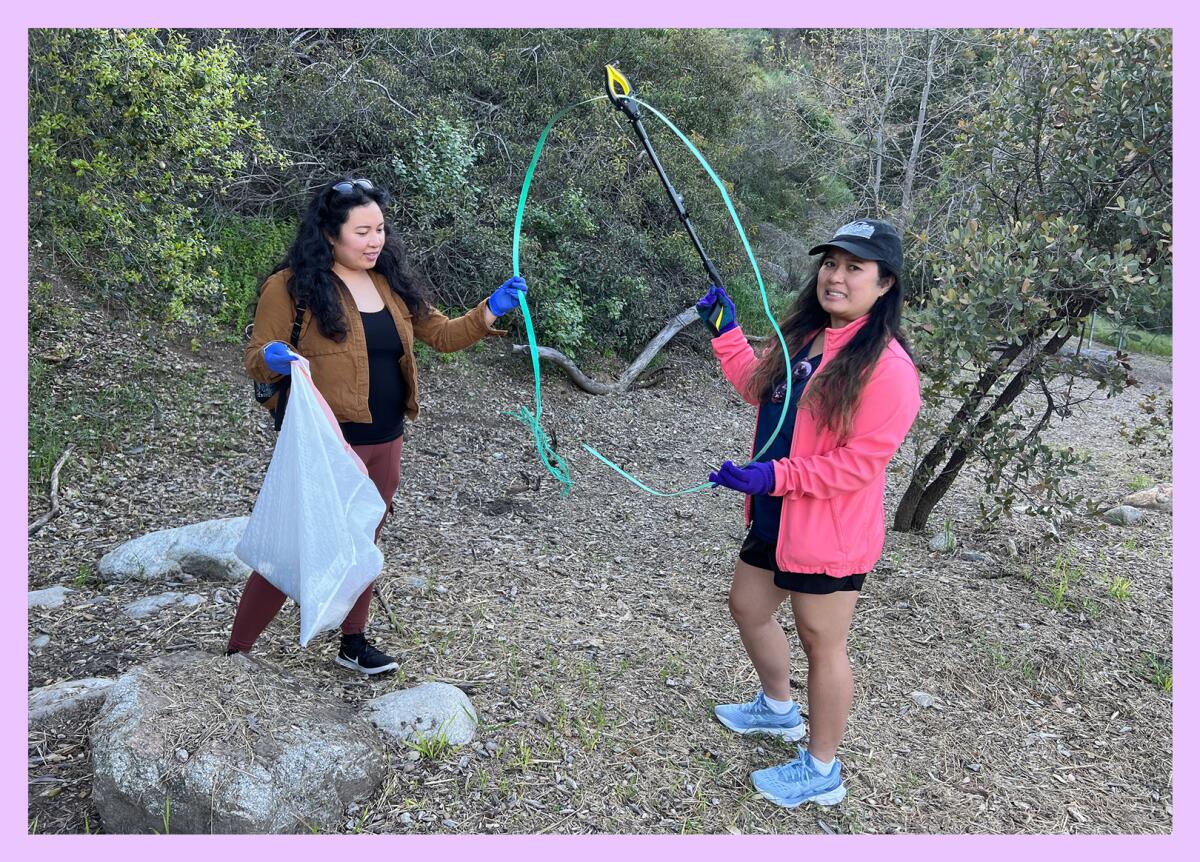
Six billion of those pieces of trash are more than 4 inches in size, which means 44 billion are less than 4 inches. That includes cigarette butts, though that number is down almost 70%, from 18.6 billion cigarette butts in 2009 to 5.7 billion cigarette butts in 2020. Unfortunately, since 2009, we’re seeing more littered cardboard, beer containers, food packaging film and sports drink and water containers. As of 2020, there were also 207 million pieces of a rather new kind of litter: personal protective equipment (PPE), e.g. gloves and masks.
We’re nothing if not social creatures: 35% of littering occurs in places where there was already trash present, so litter leads to more litter. Though the logic defies me, people figure, why not disrespect an area that’s already trashed? As a result, spots like Crystal Lake campground are covered in trash like beer cans and food wrappers — and then, few people want to camp there.
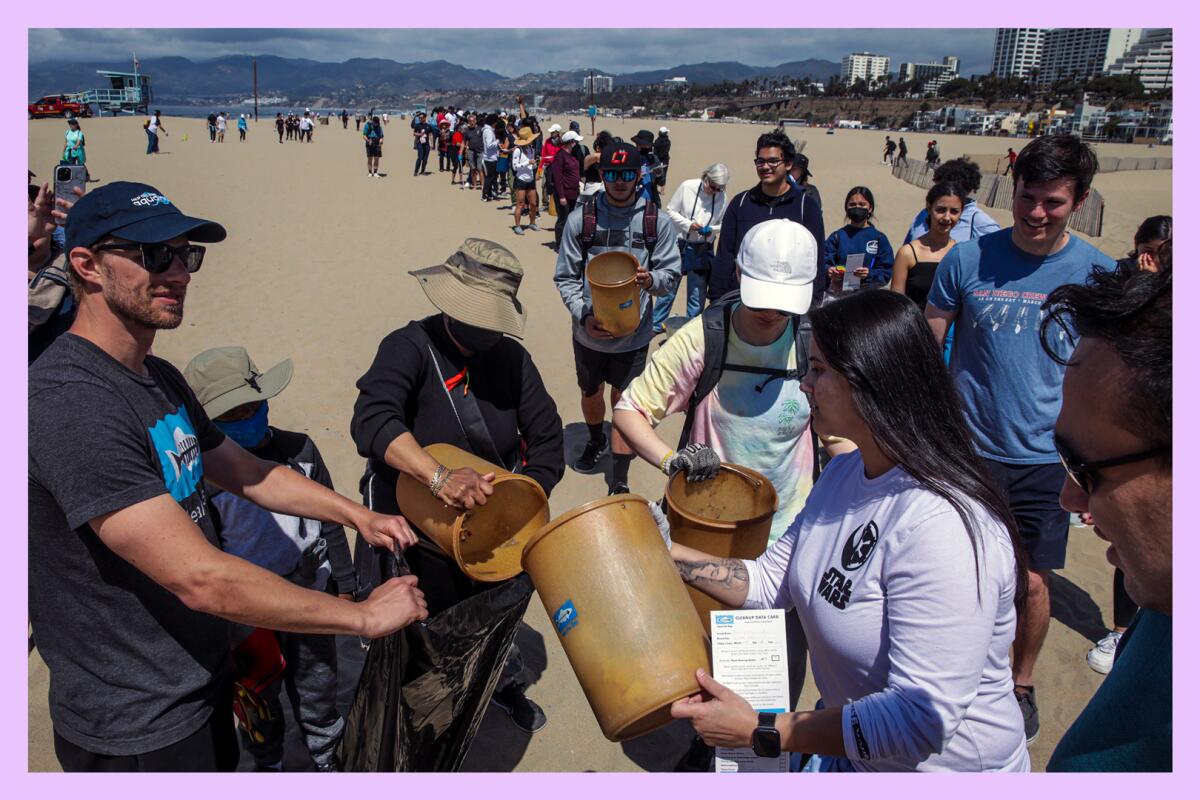
We’re addicted to speed, convenience and disposability, and it shows on our trails. Recent L.A. County laws outlawed single-use plastic food ware — and sure, more takeout containers, single-use medical items and food wrappers should be recyclable or compostable, but even compostable items take time to break down. And, when the trash does go to a landfill, it’s more likely to be near a low-income community of color.
If you can afford it, bring a reusable water bottle and cooler, and refillable toiletries, on your next hike or camping trip. I carry a set of silverware with chopsticks, a Swiss Army knife and reusable straws with me most of the time so I won’t add to the trash toll. Of course, always pack out whatever you can’t properly dispose of when you’re in nature.
The Villasors often get asked whether they’re doing community service, to which they reply that they just want to lessen trash on the trail. Often they get thanked, but it’s high time we go beyond that and normalize picking up trash while you hike or walk your dog.
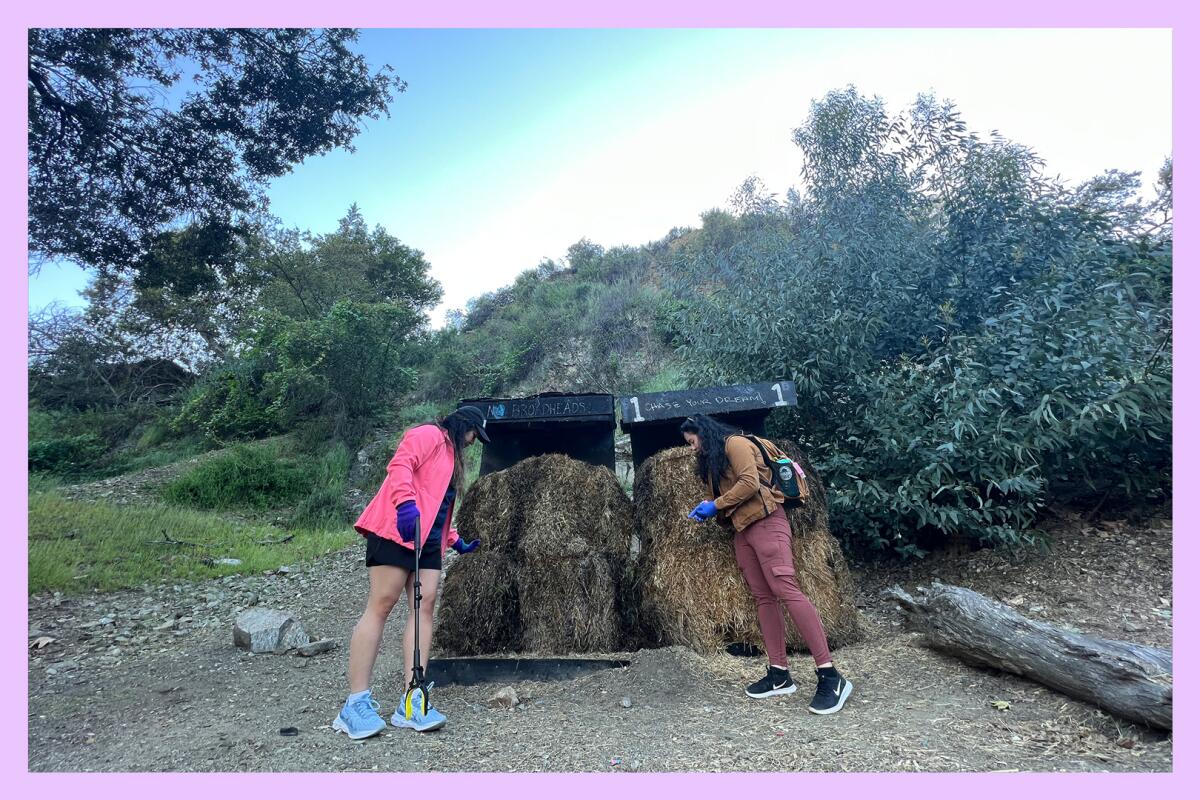
Here are some tips from the Villasors and me on how to pick up trash on your own trail, and how to encourage local litter collection.
1. Decide on a site. Find a site where you’re comfortable spending a couple hours hiking and picking up litter. You might opt for a spot with lots of picnic tables (trash often blows away from them or is purposely discarded). Or, if you’re a strong hiker, you might bring some trash down from a high peak.
2. Bring trash bags. Decide whether you are going to separate litter into compostable and not, and whether you are going to dump all litter before you leave, or take compost to a composting site.
3. Protect yourself. Bring a basic first aid kit. Wear protective shoes with a hard sole, in case there are sharps like needles on the ground. Wear long pants and protective gloves (the Villasors wear two layers of gloves: work gloves, with medical gloves on top). Don’t touch your face or body with your gloved hands after touching litter. Bring hand sanitizer and a trash picker, if possible. For beach cleanups, bring a sifter to find tiny pieces of litter in the sand.
4. Decide beforehand what you will — or won’t — pick up. Kelly doesn’t pick up sharps, nor does she pick up bagged or contained feces, whether human or canine, in most cases. Decide what you will and won’t pick up beforehand so litter collection is faster.
5. Scan your environment. Bright, unnatural colors are often easier to spot, but we dug out lots of neutral-colored plastic grocery bags deeply buried in the mud and dirt. If you think you see something, crouch down or walk closer to get a good look. Often, by peering into the grass, we were able to see bottle caps, crushed soda cans and food wrappers we hadn’t seen before.
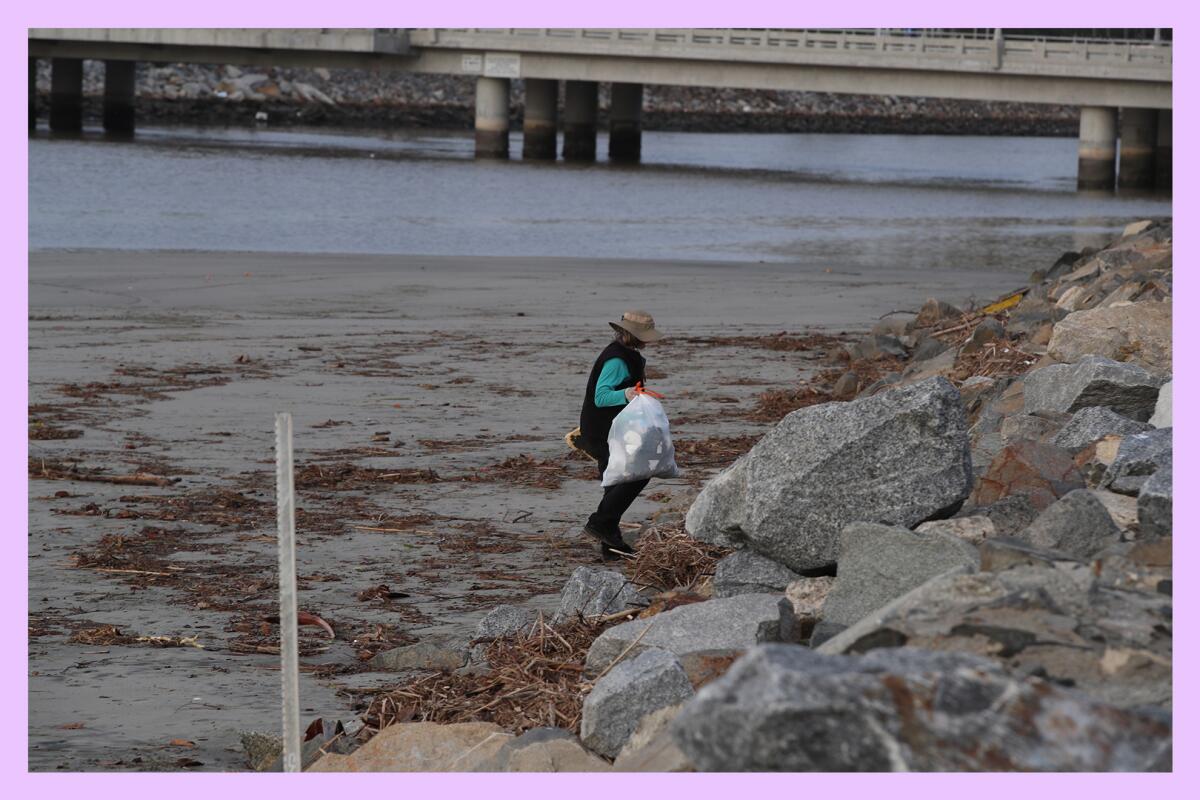
If you’re feeling discouraged after your first trash hike, following some trash-fighting influencers might help. Along with Pick Up While You Hike Up, I like Surfrider’s Rise Above Plastics, Heal the Bay, Trash Free Earth, Trash Free Trails and Surfers Against Sewage — they’ll help you stay in the loop about organized cleanups and educational facts, as well as offering inspiration to continue the trash-free Earth fight.
Collecting litter with Kelly and Christy offered so much insight into who we are as parkgoers, hikers, archers, birthday partiers and dog walkers, as evidenced by what we leave behind. Here’s hoping we can find the room to care enough not to litter our trails, and to each do our part to help clean them up. (If you still need more reasons, here’s why you should pick up trash on the trail.)
You can join Pick Up While You Hike Up for the Villasors’ Earth Day cleanup on April 22 at 3 p.m. at Cabrillo Beach.
3 things to do
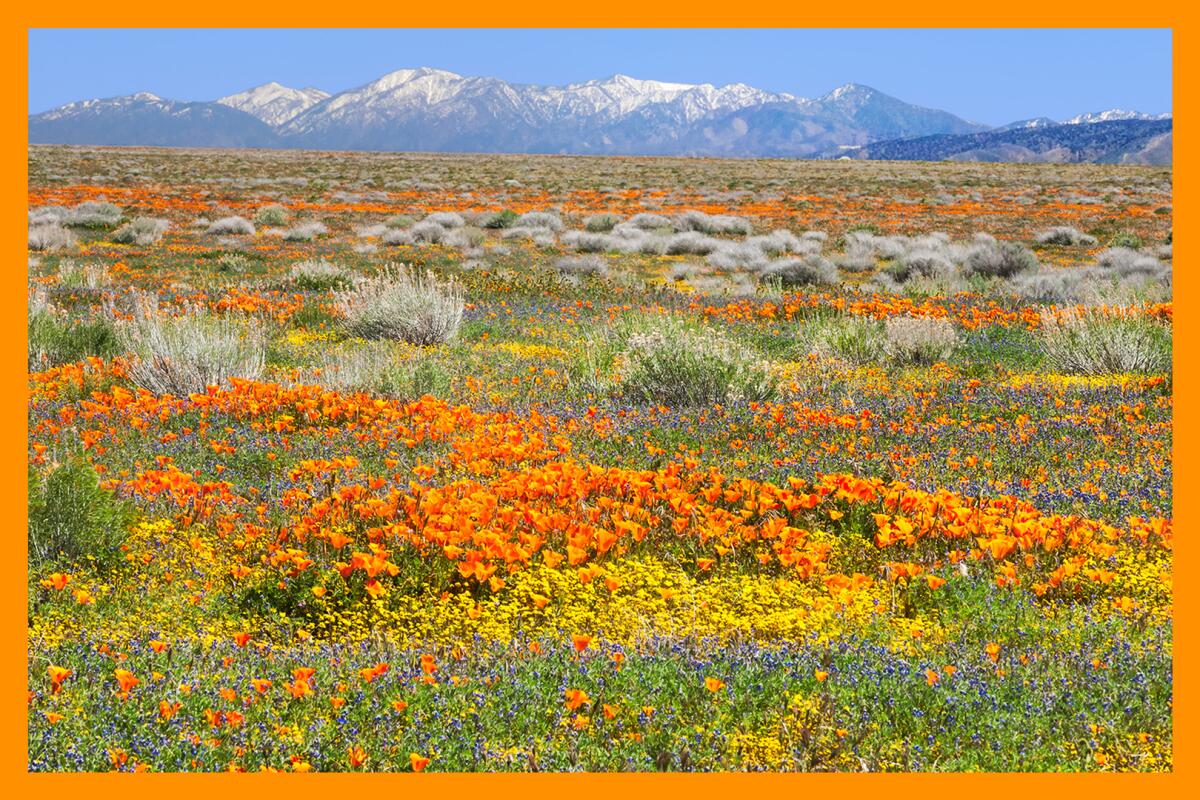
1. View California wildflowers through the lenses of two photographers. Wildflower photographers Rob Badger and Nita Winter will share their 27-year adventure photographing wildflowers and superblooms across California and the West in a virtual presentation this Thursday from 6 to 7:30 p.m. Join other flower lovers and conservationists to hear about their book, “Beauty and the Beast: California Wildflowers and Climate Change,” co-published with the California Native Plant Society. The event is free. Links to the streaming talk on Zoom or YouTube will be added here closer to the event.
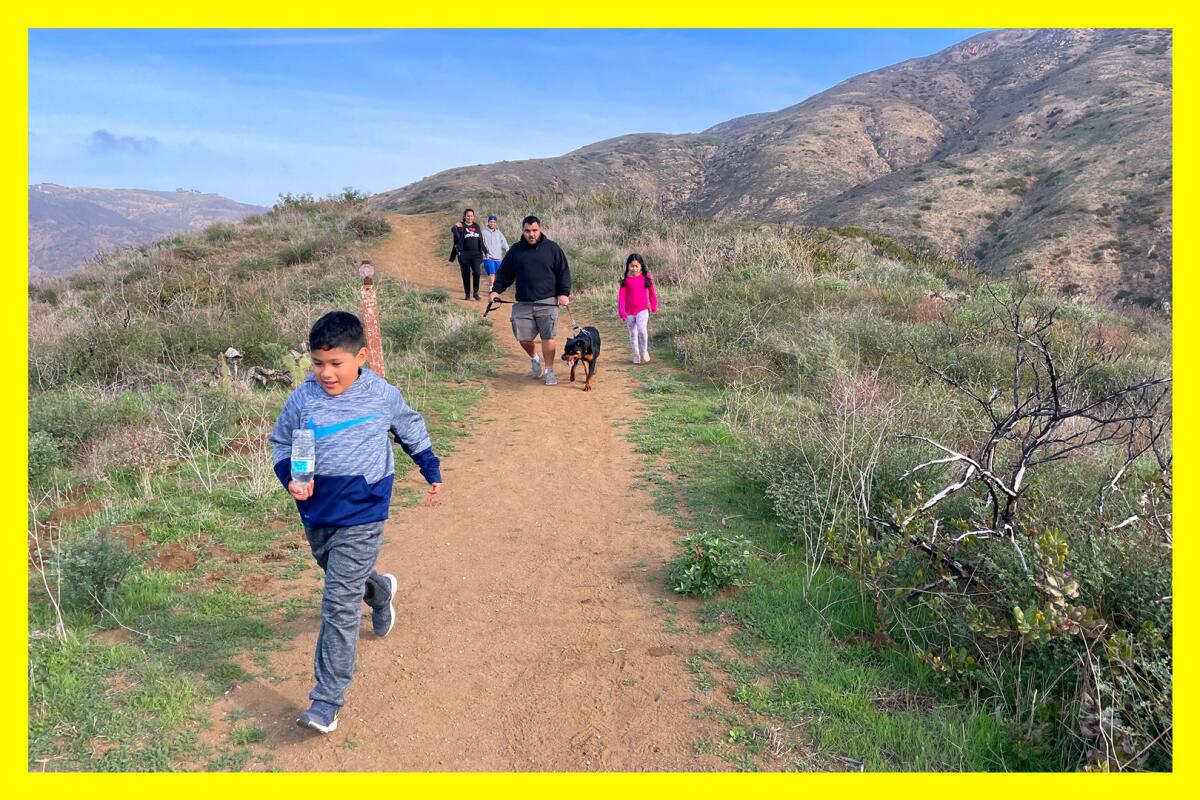
2. Go on a family hike — and borrow free baby carriers. Bewilder Basecamp is an org that’s so very L.A. to me: fun, funky, family-oriented outdoor hangs that don’t sacrifice kids’ desires or parents’ sanity. They’re doing a dog-and-kid-friendly hike at Inspirational Point Trail in Will Rogers State Park on Saturday. Hatcher Pack will provide 10 baby carriers (first-come, first-served) for little ones between 7 to 35 pounds. Don’t forget to RSVP; meet in the parking lot at 8:30 a.m. for this free hike.
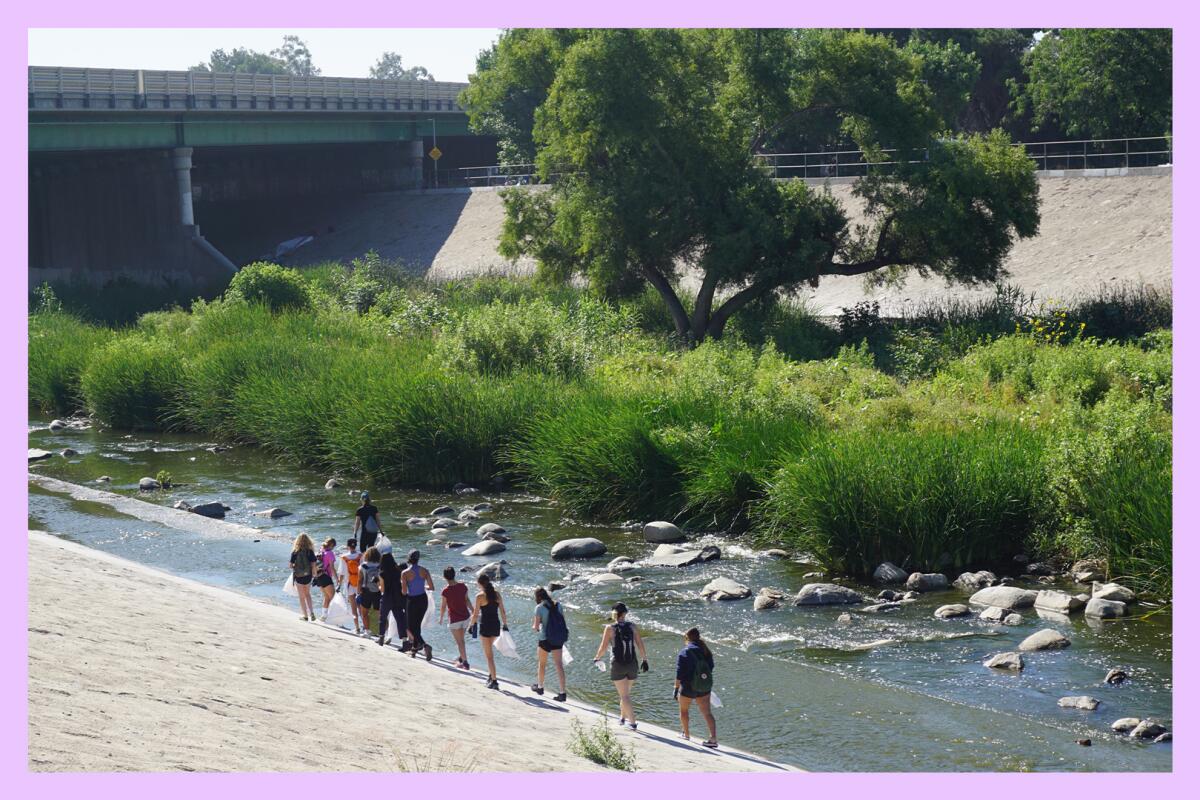
3. Clean up the L.A. River for Earth Month. A 51-mile river runs through our city, but you might not often see it, much less interact with it. Now’s your chance, because Friends of the L.A. River (FoLAR) is hosting its 33rd Annual Great L.A. River CleanUp on April 15 and 22, starting at 8 a.m. If cleanups aren’t your jam, you’ll also be able to join in on habitat restoration, nature walks and river education. The FoLAR shebang offers seven site opps across the city, with volunteer locations on the Upper, Middle and Lower River on each day. Naturally, the events are free, and you can register here.
The must-read

Maybe you’ve read “Counter Intelligence,” Jonathan Gold’s account of eating his way across Pico Boulevard, or you’ve done the Great Los Angeles Walk from West Adams to Venice Beach.
But have you walked all of Sunset Boulevard? Pedro Moura’s account of trekking past historic venues like the Black Cat and ArcLight Hollywood all the way to Santa Monica has inspired me to try.
Also a hiker, Moura writes: “Scaling Southern California’s tallest peaks provides a purer rush than perambulating its most famous streets, but the streets stick with you.”
He suggests fusing city walking and hiking by leaving home, heading to the Arroyo Seco bike path to Lower Arroyo Park, past the Rose Bowl and through Upper Arroyo Park, to Hahamongna Watershed Park and the Gabrielino Trail, and eventually to Chantry Flat. Who’s up for it?
Happy adventuring,

Check out “The Times” podcast for essential news and more.
These days, waking up to current events can be, well, daunting. If you’re seeking a more balanced news diet, “The Times” podcast is for you. Gustavo Arellano, along with a diverse set of reporters from the award-winning L.A. Times newsroom, delivers the most interesting stories from the Los Angeles Times every Monday, Wednesday and Friday. Listen and subscribe wherever you get your podcasts.
P.S.
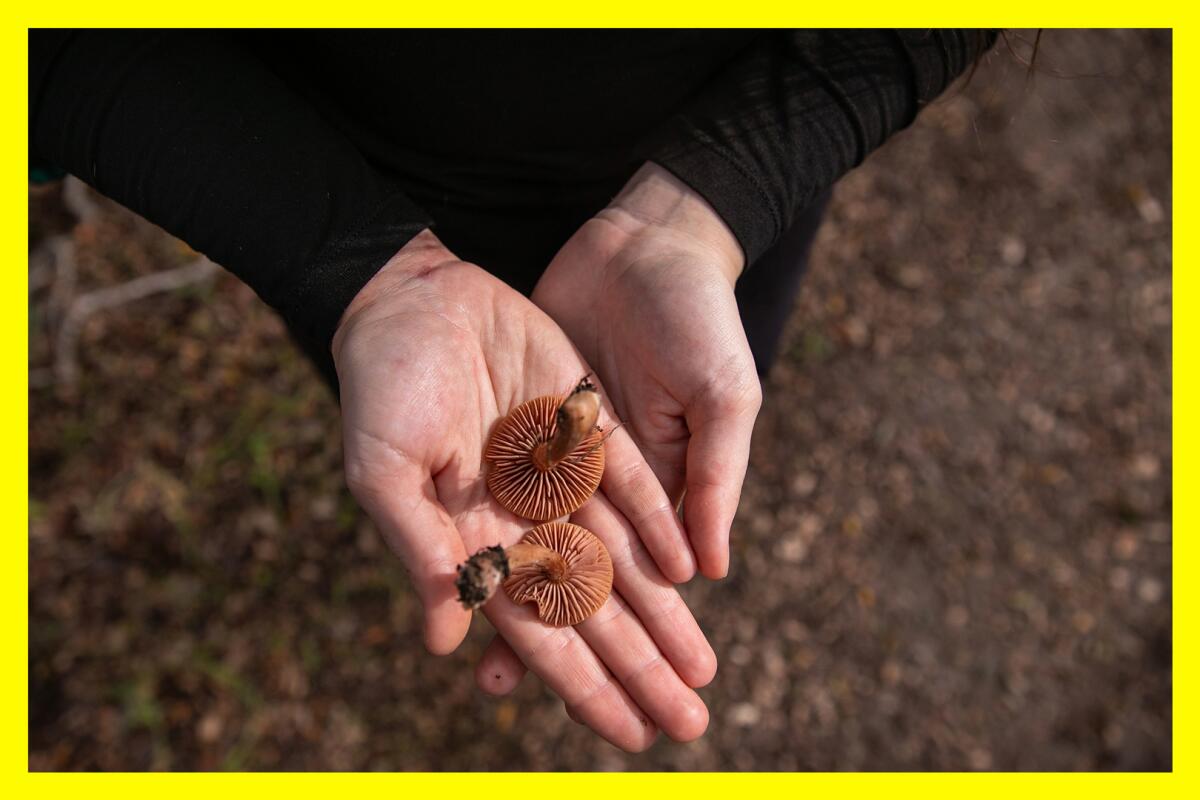
While you’re strolling down Sunset, why not take some detours and forage a bit? Spring brings fresh buds, and some winter citrus is still ripening in our urban grove. If you’re looking for a guide to help you find some sweet treats, zoom in on Falling Fruit, a crowd-sourced international map that designates spots where people have found forageable food. It’s where many foragers turn when they’re in an unfamiliar neighborhood to find a quick snack or another generous tree.
Liz Susman Karp writes about Falling Fruit’s sumptuous windfalls, from mulberries to cider apples, for Atlas Obscura. When you find your own treasure trove, drop a pin in both Falling Fruit and your own Google Maps account, so you can keep track of your fave foraging spots, visiting them again in different seasons.
For more insider tips on Southern California’s beaches, trails and parks, check out past editions of The Wild. And to view this newsletter in your browser, click here.
Sign up for The Wild
We’ll help you find the best places to hike, bike and run, as well as the perfect silent spots for meditation and yoga.
You may occasionally receive promotional content from the Los Angeles Times.




